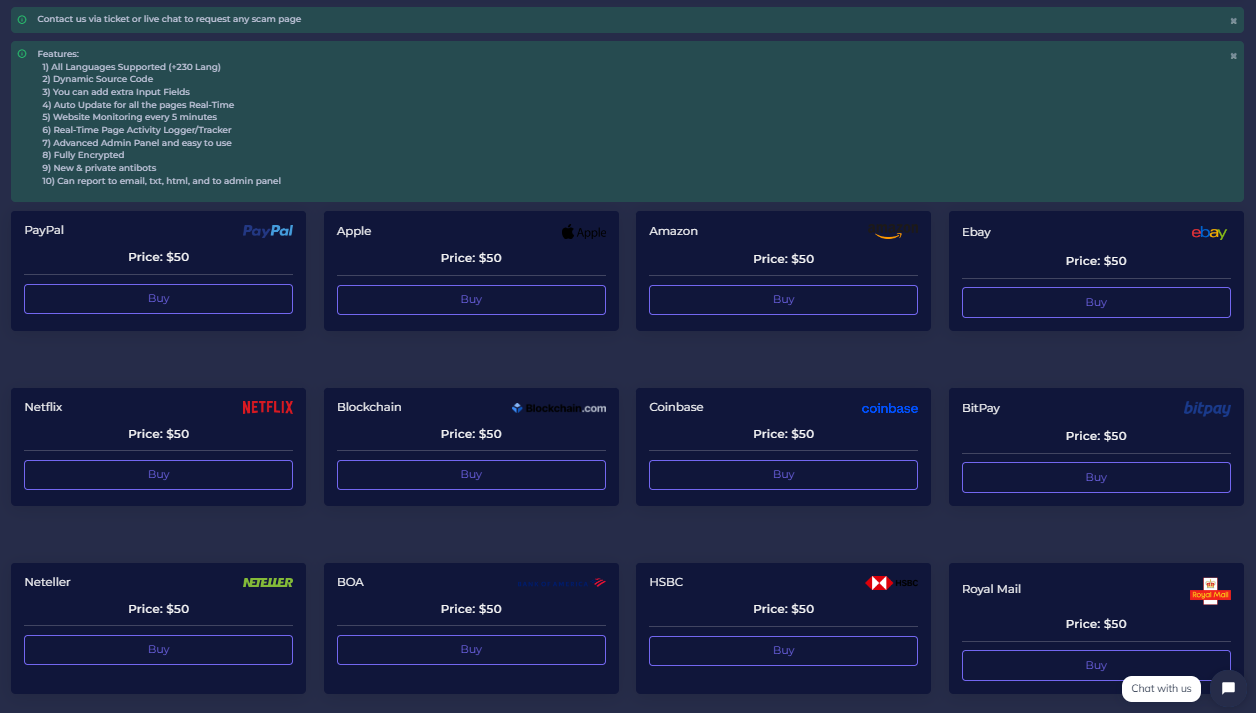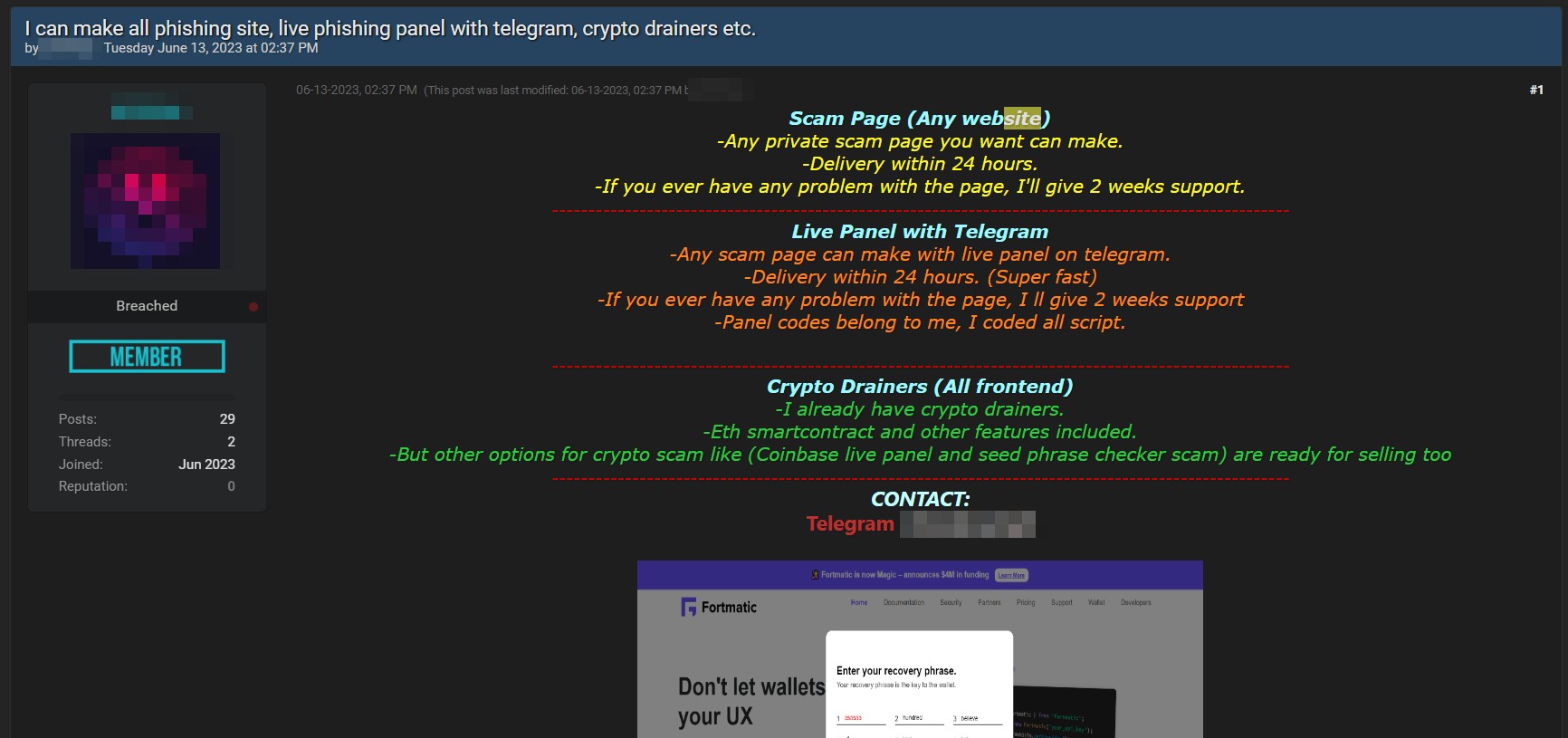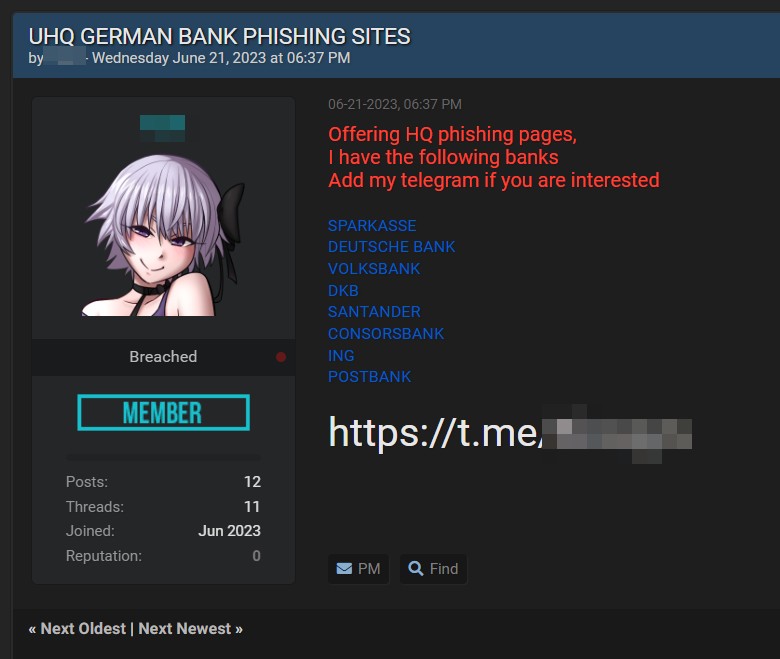
“Phishing as a service” (PaaS) is a type of service offered by cybercriminals or illicit service providers that simplifies and automates the entire process of creating and distributing phishing attacks and, consequently, malicious campaigns.
It works similarly to many other subscription-based services or affiliate models, making it easier for attackers to run phishing campaigns without requiring in-depth technical knowledge.

Here’s how phishing as a service works:
In addition to the PaaS models we’ve seen, there are many cybercriminals offering services for creating fake websites that closely resemble the original ones. These services are posted on underground forums as detailed in the post below.

Phishing as a service makes phishing attacks more accessible, as it does not require advanced technical knowledge on the part of the attacker. of the attackers.
These services pose a significant threat to individuals and organizations, and defending against them requires extensive awareness, user education, and the use of advanced cybersecurity solutions to detect and mitigate phishing attacks.

The acronym “Phishing as a Service” (PaaS) has been adopted similarly to “Software as a Service” (SaaS), and other cloud-based services are abbreviated for convenience. However, it’s important to note that the term “PaaS” can also be used to refer to “Platform as a Service” in a cloud computing context.
Therefore, when using the acronym “PaaS” to refer to “Phishing as a Service,” it’s best to clearly specify the context to avoid confusion.
The importance of risk awareness related to phishing attacks is crucial in defending against this ever-growing threat. The prevalence of phishing attacks is constantly increasing, representing a major threat to cybersecurity. Here are some key insights into the importance of being aware of phishing risks:
Emails remain one of the most common vectors for phishing attacks. It’s estimated that over 90% of malware attacks begin with a phishing email. User awareness is crucial to preventing phishing attacks. Training business users to recognize and report suspicious emails can significantly reduce the risk.
Therefore, cybersecurity training should be an ongoing process. Attackers are constantly evolving, creating increasingly convincing phishing emails and websites. Keeping users informed about the latest phishing threats and tactics is essential for effective defense.
Both businesses and users must be aware of the risks associated with phishing attacks and take steps to protect themselves from this ever-growing threat. Prevention is often the most effective defense against phishing attacks, and risk awareness is the key to successful prevention.
Follow us on Google News to receive daily updates on cybersecurity. Contact us if you would like to report news, insights or content for publication.
